This wonderful Cornish workshop and museum is dedicated to the legacy of studio pottery trailblazer Bernard Leach
Become an instant expert on art made from sugar
Become an instant expert on art made from sugar
17 Jan 2023
Do you have a sweet tooth? If so, you’re in good company. Our expert, Tasha Marks, is a food historian who specialises in sugar; she also has an eye for how artists today are turning the sweet stuff into art. After discovering these delicious dioramas, she says, you’ll never look at sugar in the same way again
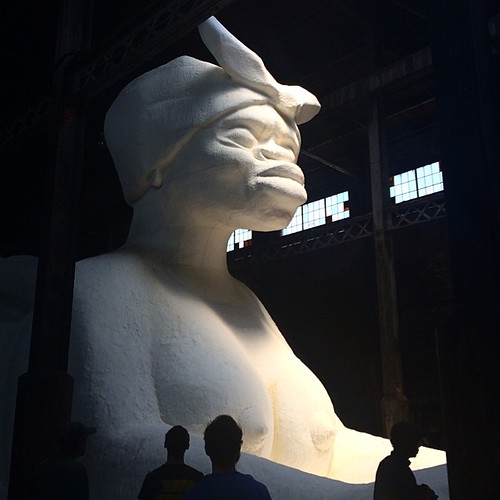 Kara Walker’s giant sugar sculpture, A Subtlety (2014). Photo: Victoria Belanger/Creative Commons
Kara Walker’s giant sugar sculpture, A Subtlety (2014). Photo: Victoria Belanger/Creative Commons
1. Sugar and spectacle
Sugar has been a status symbol in Europe since it arrived on European shores in the 12th century. It was the elaborate banquets of the Renaissance, however, that saw it elevated to new heights. In the 1500s, a sugar centrepiece could cost more than an average person’s yearly wage, making these saccharine monuments as much of a statement as any painting or sculpture.
The Renaissance dessert banquet would be a place to display your wealth, style, political leanings, family ties and identity. There was a language to the dessert banquet, which we have now lost to time, but the storytelling possibilities of sugar are something that contemporary artists are embracing as an artistic medium.
One of the most poignant recent examples is Kara Walker’s A Subtlety (2014). This monumental sugar sculpture draws on both the aesthetic and tumultuous history of sugar.
The substance is a heavily charged medium; it draws us in with its sweetness but has a dark undercurrent and a history entwined with the transatlantic slave trade. We experience both elements in Walker’s work.
Her installation (measuring more than 23m) references the historical spectacle of sugar sculptures – an engorged version of the decorative pieces (known as ‘subtleties’) that would have graced the tables of history. But, unlike the whitewashed visions of the past, this sugar sculpture takes the form of a sphinx with a black woman’s face. The sphinx is an icon of civilisation but also of ruin.
This work is all about dualities. It is beautiful but uncomfortable at the same time and is subtitled: ‘A homage to the unpaid and overworked Artisans who have refined our Sweet tastes from the cane fields to the Kitchens of the New World on the Occasion of the demolition of the Domino Sugar Refining Plant.’
This is not a sweet dessert display by any means. As the gravitas of the history begins to take hold, it turns our stomachs, and we may come to realise that this sugar-coated pill can be hard to swallow.
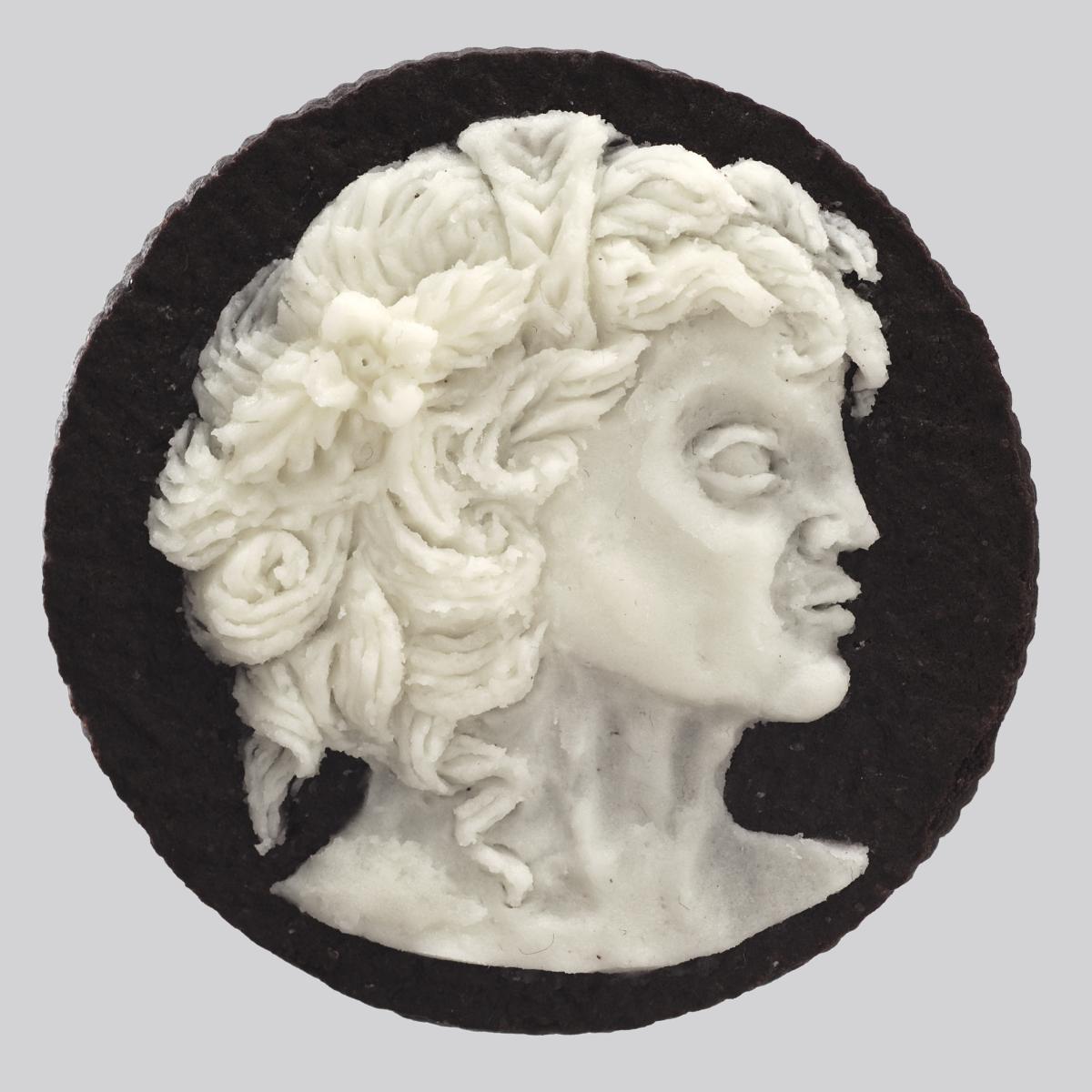 Judith Klausner’s Oreo Cameo (2011). Photo: courtesy of the artist
Judith Klausner’s Oreo Cameo (2011). Photo: courtesy of the artist
2. Playing with our food
While Walker’s work asks us to redefine our relationship with the history of sugar, this piece by Judith Klausner, titled Oreo Cameo, provokes us into rediscovering the imaginative potential of the everyday.
In the hands of the artist, this humble biscuit turns into a work of art. As children we were told not to play with our food, but now I positively encourage it. We should feel the same in the kitchen as we do in the art studio – after all, these are both places of creation and making. Here, the cream inside the Oreo becomes a canvas and a place for commentary. In the artist’s hands the biscuit becomes one of a collection of miniature portraits, aiming to highlight the contrast between contemporary and historical gender roles.
The Victorian-era figures in buttercream represent women from the past who had to spend hours in the kitchen creating meals from scratch. The artist is celebrating the freedom that comes from convenience foods, in contrast to that labour-intensive culinary past. She explains: ‘Home cooking is once again gaining popularity. Within this atmosphere, the temptation is to romanticize [sic] the past is strong. Yet, the availability of packaged foods is what allows us the time to pursue careers, to develop new technologies, to create. The food on our tables may not be as tasty as it once was. It may not even be as wholesome. But it is important to take a step back and recognize [sic] the trade that has been made, and that what we have gained is not to be undervalued.’
This point of view may be at odds with how many of us think about food, but the fact that a biscuit can be such a provocative point of discussion is what changes it from being an item in our cupboards to an object on our minds.
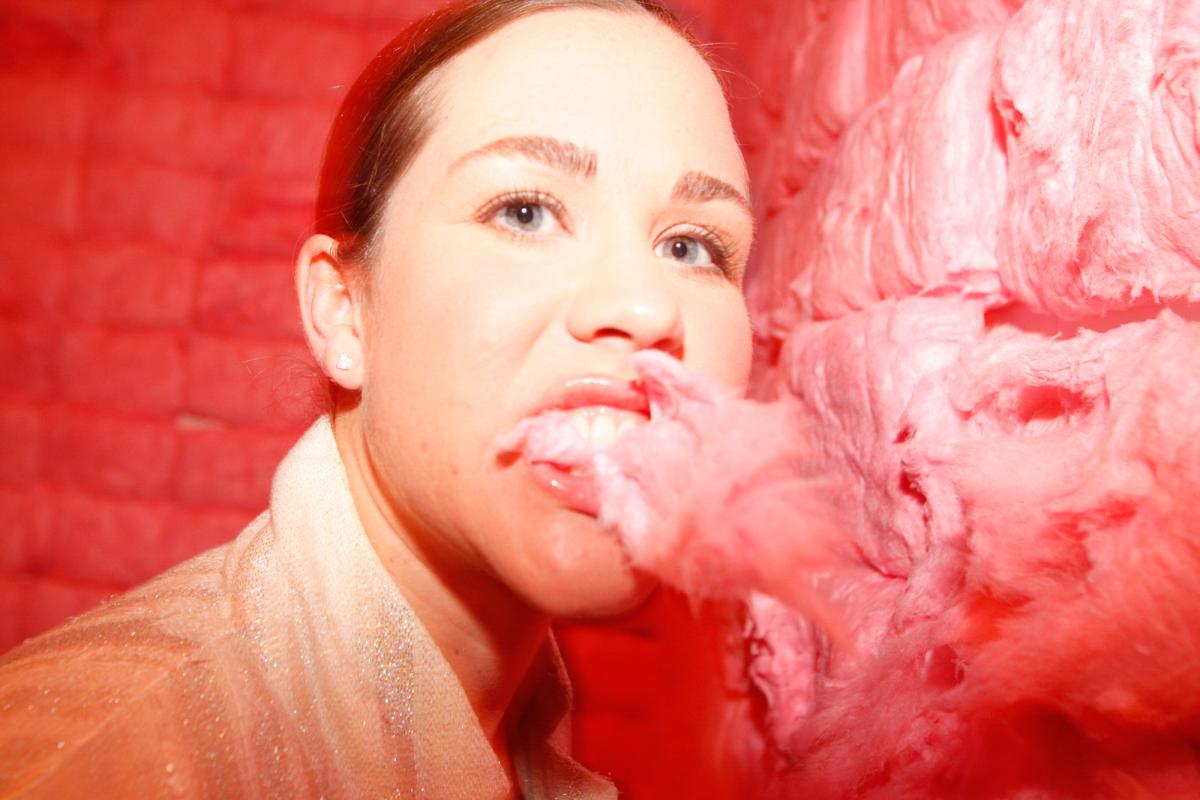 A visitor enjoys the edible side of Jennifer Rubell’s Padded Cell (2010). Photo: Joseph Michael Lopez/courtesy of the artist
A visitor enjoys the edible side of Jennifer Rubell’s Padded Cell (2010). Photo: Joseph Michael Lopez/courtesy of the artist
3. The art of eating
Both pieces we have looked at so far have asked us to look at food in different ways.
While Walker probes our connection with the past, Klausner asks us to reimagine the everyday, but, so far, no one has requested we eat anything. This may be unsurprising, as in the gallery space we tend to speak quietly, we’re told not to touch and we should definitely not lick anything.
But what if you were allowed?
When food is added to the gallery space it changes its meaning. Food in a gallery environment is a shared public experience. It automatically reframes the material, because we are now interacting with food in a place where it doesn’t usually belong.
A fantastic example of this is Jennifer Rubell’s Padded Cell. This artwork is a 2.5 x 5m room padded with more than 1,800 cones of cotton candy and illuminated by a single light bulb. The installation is claustrophobic and plays with the idea of confinement, pleasure and excess. Like Walker’s work, it’s about the duality of sugar, being enticing and oppressive at the same time. In this case, discomfort transforms into desire as visitors to this installation were not just viewers; they were also invited to eat it, tapping into a gluttonous, feral desire to eat the walls and ceiling.
The power of sugar in this instance lies in its ability to transform the behaviour of the viewer. We are so used to consuming art with our eyes that it’s refreshing to finally be able to use some of the other senses.
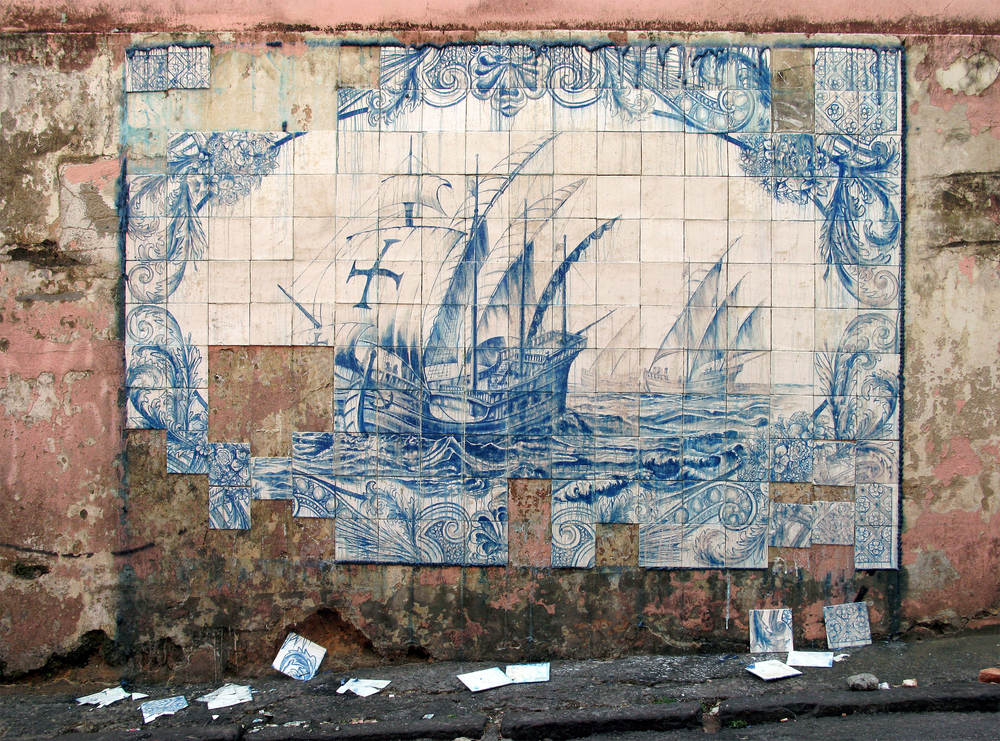 The Wealth of Some, The Ruin of Others (2009) by Shelley Miller. Photo: courtesy of the artist
The Wealth of Some, The Ruin of Others (2009) by Shelley Miller. Photo: courtesy of the artist
4. The ephemerality of edible art
Though Rubell’s piece looked delicious, there is another side to art made from food – transience and decay.
Art created from food is ephemeral by its very nature; it is a memento mori, a representation of the transience of life and a literal comment on the passing of time.
This is perfectly embodied in the work of Shelley Miller, a Canadian artist who creates striking sugar murals. Miller has been working with the medium of sugar for nearly 18 years, using it to address ideas of taste, desire, consumer culture, excess and greed. Her murals address the not-so-sweet history of sugar and its roots in slavery and colonisation. And she continues to use sugar as a material for its richness in cultural meaning and to address systems of power and corruption.
Her piece The Wealth of Some, The Ruin of Others (2009) is my personal favourite of her installations. It was made from handmade sugar tiles, painted with edible inks and applied to an exterior wall with royal icing. Installed on a wall in Salvador, Brazil, near a port that was historically linked to the sugar trade, the installation lasted seven weeks in total and was documented in a series of photographs that recorded its decay.
The blue and white design evokes Dutch Delftware and Portuguese azulejos (decorated tiles) – a visual link to two countries with heavy connections to the transatlantic slave trade. Miller’s murals melt, distort and smear in the elements, showing how the sugar industry was tainted by forced labour. The gradual decay of each piece also seems to comment on how we are separated from the details of such atrocities through the steady passage of time. In Miller’s work we have the materiality and the history of sugar intertwined.
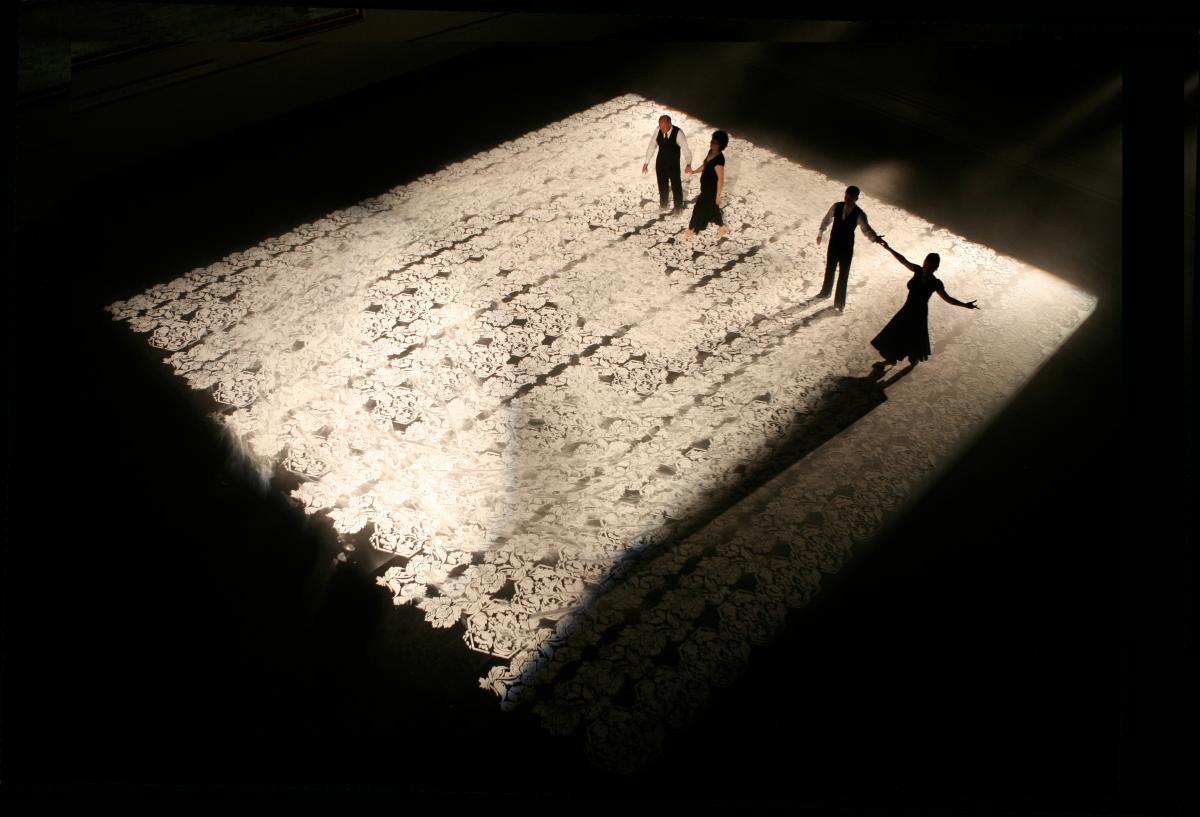 Sugar Dance (2008) by Linda Florence. Photo: George Torode/courtesy of the artist
Sugar Dance (2008) by Linda Florence. Photo: George Torode/courtesy of the artist
5. Food and performance
The art of eating is a performative act and food has many stories to tell. When we consider edible art, we may be thinking about how it fits into the world of art history. How can we collect it, how can we display it, when it’s not meant to last?
That is, in fact, part of its power.
You might like to consider edible art as more akin to a performance than a sculpture. It’s something that has a life cycle that is temporary; it may even have been made to be consumed or destroyed. It goes against the standard process of creation, which is often to make something in the present that lives into the future.
The act of making something beautiful that is temporary is a radical thing.
I want to close with the work of Linda Florence, an artist with a design background whose work Sugar Dance is a fantastic embodiment of the beauty of ephemerality.
In this work a stencilled icing sugar floor sat in the centre of the Raphael Gallery in the V&A. The pattern was inspired by both the museum’s textile archive and the detail in the stonework of the gallery. Yet the piece is not the delicate design alone – it is also the traces left behind as dancers performed the steps of a Viennese waltz on top of it. The repetitive nature of the dance gradually revealed the physical footprint of the waltz – the ghost-like traces of intervention becoming part of the story. Here, there is both beauty in destruction and stories in the sugar.
Tasha’s top tips
Dive deeper into this subject with these good reads
In print:
- Food and Museums by Nina Levent and Irina D Mihalache
- Feast: Radical Hospitality in Contemporary Art edited by Stephanie Smith
- The Edible Monument: The Art of Food for Festivals edited by Marcia Reed
- Food: Bigger Than the Plate by May Rosenthal
- Feast & Fast: The Art of Food in Europe, 1500–1800 by Victoria Avery and Melissa Calaresu
Online:
- Art UK, Sweets, slavery and sculptures: a brief history of sugar in art, Tasha Marks (2020) - artuk.org/discover/stories/sweets-slavery-and-sculptures-a-brief-history-of-sugar-in-art
- The British Museum, Pleasant Vices: Sugar, Tasha Marks (2018) - avmcuriosities.com/blog/2018/13/month/pleasant-vices-sugar
About the Author
Tasha Marks
Article Tags
JOIN OUR MAILING LIST
Become an instant expert!
Find out more about the arts by becoming a Supporter of The Arts Society.
For just £20 a year you will receive invitations to exclusive member events and courses, special offers and concessions, our regular newsletter and our beautiful arts magazine, full of news, views, events and artist profiles.
FIND YOUR NEAREST SOCIETY
MORE FEATURES
Ever wanted to write a crime novel? As Britain’s annual crime writing festival opens, we uncover some top leads
It’s just 10 days until the Summer Olympic Games open in Paris. To mark the moment, Simon Inglis reveals how art and design play a key part in this, the world’s most spectacular multi-sport competition



